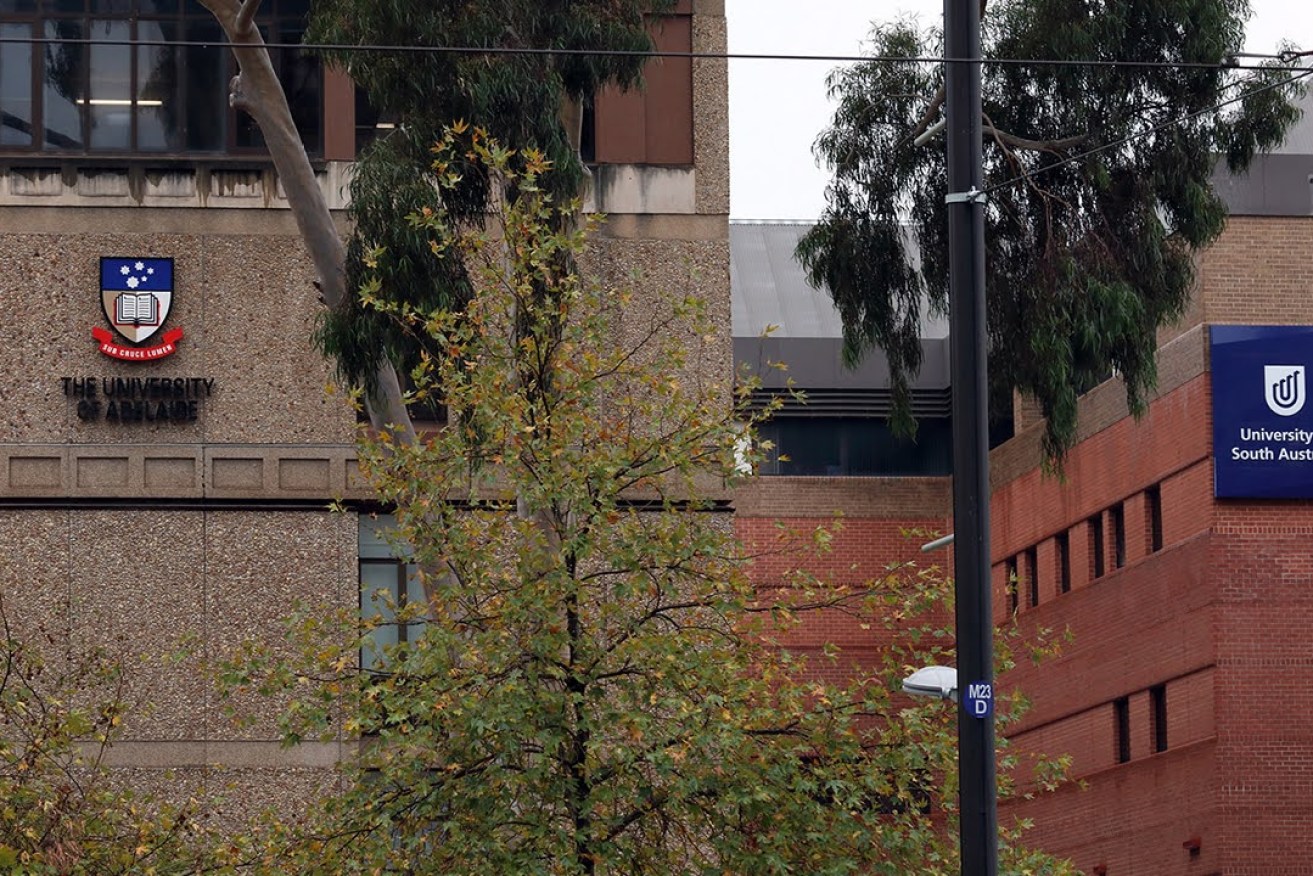Labor’s university merger plan would shrink South Australia
By announcing a policy to merge South Australia’s universities, Labor leader Peter Malinauskas has shown he is committed to making the state smaller and more inconsequential, argues Collette Snowden.

Where's the evidence that a single merged university in SA would be beneficial? Photo: Tony Lewis/InDaily
Clutching a glossy brochure – a sure sign of policy depth and gravitas – and with his education spokesperson Susan Close nodding at his side, Malinauskas on Saturday signalled his intention to make a university merger a key election policy for the SA Labor Party.
What a time to commit to a policy to further reduce jobs in the tertiary education sector.
The sector is also facing job losses due to COVID-19, enrolments likely to fall in 2021 unless international students can enter Australia, and Federal Government funding policy creating greater uncertainty. Casual and contract teaching and research staff have already had their work reduced or terminated, while permanent employees at our three universities face potential redundancy.
What makes the Labor leader think now is the right time to resuscitate a policy that’s been rejected twice and shown to be divisive and unpopular?
With no clear evidence that a merger will deliver better educational outcomes, increase research income, or produce multiplier effects for the SA economy, this policy is more likely to accelerate the brain drain from South Australia.
At least one vice-chancellor has been courting members of parliament to discuss mergers, even as the recent discussions to merge the University of Adelaide and UniSA were shelved and staff were assured a merger was off the table (“for now”).
While the lobbying might have worked on Malinauskas, his policy doesn’t appear to be informed by evidence, or consideration of the likely consequences for the state.
Malinauskas has been busy proclaiming fervent opposition to privatisation of the public sector, but nothing will be more helpful to the growth of private tertiary education than shrinking the public university sector in South Australia. Private universities will relish the opportunity offered by this policy to fill the need for competition, which will reduce domestic enrolments in the public institutions – whatever size they are – and lead to further dependency on international student numbers.
Just as in the business sector, university mergers and acquisitions have a high failure rate.
He claims a merger would allow a South Australian university to obtain ranking in the top 100 in the world. What evidence is there to support that claim? And how could that ranking be guaranteed after a merger? As universities in other countries with larger populations and deeper commitment to education develop their systems and increase research investment and output, the ranking of all Australian universities is threatened by increased global competition. Australia’s capacity to compete in the rankings is made worse by the failure of successive Australian governments to properly fund the tertiary education sector.
Malinauskas claims our universities are too small to make an impact. How then does he explain the success of ANU, with a smaller number of students in an even smaller city? Or the California Institute of Technology with only 2200 students, yet currently ranked number two in the world? Or the École Polytechnique in France, currently ranked 93, but with fewer than 3000 students? Of the top 25 universities in the world, only the University of Toronto has more students than the University of South Australia.
And then there’s the problem that the ranking systems are not reliable measures of quality. Substantial research on how they are calculated and manipulated dismantles their validity.
A recent study by Mussard and James published by the Institute of Electrical and Electronic Engineers, argues that “ranking tables can be gamed by universities to get a high ranking using parameters that do not capture the wide spectrum of characteristics that reflect academic excellence in research, teaching, and services”. Given these acknowledged problems, why even use university ranking as a justification to determine critical public policy?
The example of university mergers elsewhere also provides cautionary lessons. In Europe and the USA, there was great enthusiasm for university mergers in the 1990s and early 2000s, but the cost and disruption mostly failed to deliver projected outcomes.
Just as in the business sector, university mergers and acquisitions have a high failure rate. For students and communities, the loss of institutional identity and culture is negative, and reputation and brand damage has proved difficult to rebuild.
Malinauskas can’t argue repeatedly that despite its small population South Australia punches above its weight in business, innovation and entrepreneurship, but for the same reason needs a massive institution as a measure of its intellectual worth and capacity.
The SA Labor Party might fare better politically if it defended the higher education system, better protected South Australia from domination by eastern state sectoral interests and committed to greater public investment in research and the commercialisation of that research.
Dr Collette Snowden is president of the UniSA branch of the National Tertiary Education Union.




